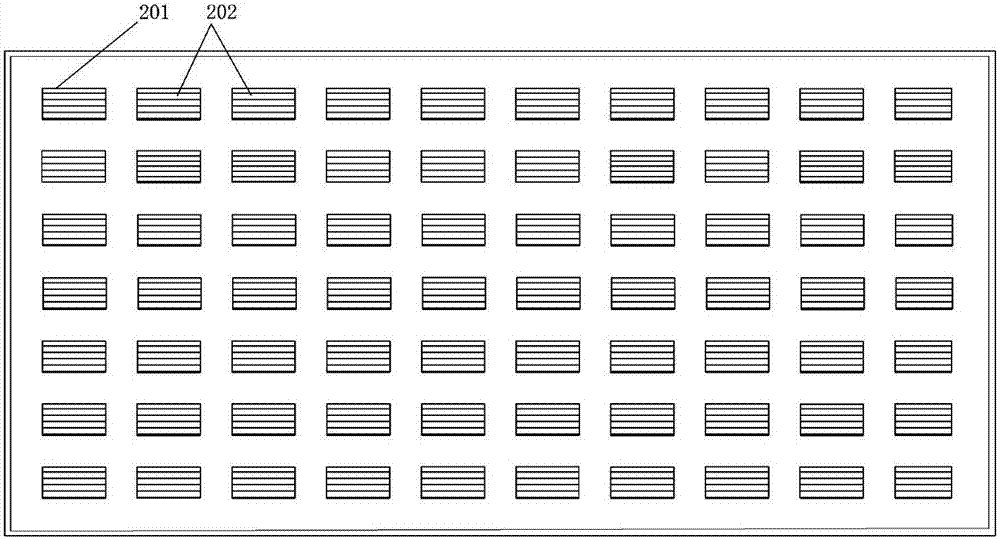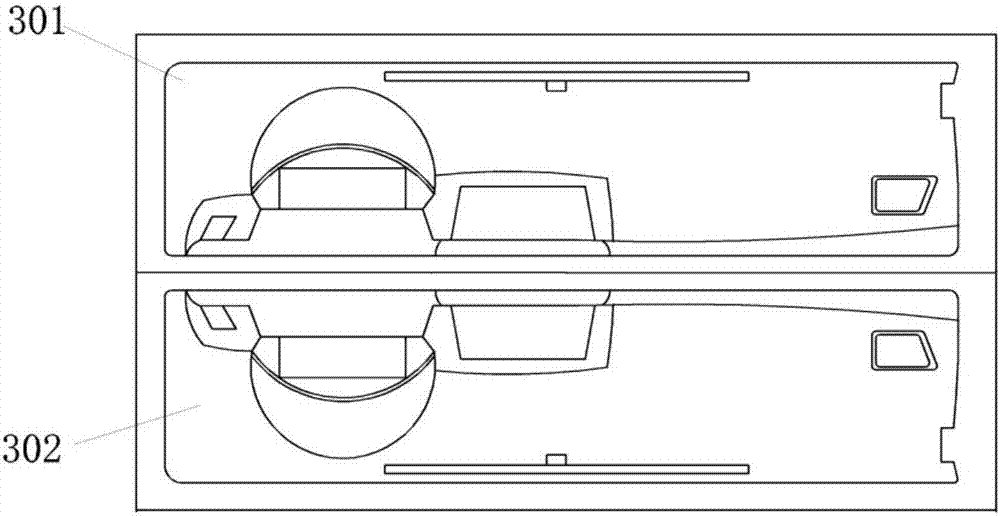Vacuum blister forming process and device for regenerated leather skin of automobile instrument panel
A technology for automotive dashboards and vacuum blisters, which is applied to home appliances, other home appliances, and household components. It can solve problems such as complex deformation, tensile strength, elasticity and tear performance gaps, and damage, and achieve optimal molding temperature. and pressure, avoid deformation or disappearance, avoid the effect of rebound deformation
- Summary
- Abstract
- Description
- Claims
- Application Information
AI Technical Summary
Problems solved by technology
Method used
Image
Examples
Embodiment 1
[0057] (1) Evenly mix 4080 fiber and kraft fiber in a certain proportion, wherein the mass fraction of 4080 fiber is 12%. Then the mixed fibers are combed into a net, and then the regenerated leather is produced through 7 spunlace processes.
[0058] (2) Select the positive mold vacuum blister forming method, and uncoil the respective rolls of the regenerated leather (about 1.0mm in thickness) and the PU sheet with a thickness of 0.5mm of prefabricated pattern in (1) through the unfolding station, Among them, the PU sheet is located above the regenerated leather, and is conveyed to the heating station through the conveyor belt, and the regenerated leather and PU sheet are precisely heated by the matrix heating unit.
[0059] (3) When the regenerated leather and PU sheet are transported to the male mold vacuum forming station, first fix the edge of the sheet, and then blow in hot air at 100°C from the bottom of the vacuum forming chamber to make the regenerated leather and PU s...
Embodiment 2
[0065] (1) Evenly mix N720 viscose fiber and kraft fiber in a certain proportion, wherein the mass fraction of thermoplastic synthetic fiber N720 with skin-core structure is 14%. The evenly mixed fibers are air-laid and six needle-punched to produce regenerated leather.
[0066] (2) Select the male mold vacuum blister forming method, and uncoil the respective coils of the regenerated leather (about 1.2mm thick) obtained in (1) and the PU sheet with a thickness of 0.3mm that has been prefabricated. , in which the PU sheet is located above the regenerated leather and conveyed to the heating station through the conveyor chain.
[0067] (3) Accurately heat the regenerated leather and PU sheet that have been transported to the heating station composed of matrix heating units. For the area where the deformation is slightly gentle during subsequent vacuum blister molding, the heating temperature is set to 120 °C; and In the process of vacuum blister forming, the set temperature is 1...
Embodiment 3
[0073] (1) Evenly mix 4080 viscose fiber and kraft fiber in a certain proportion, wherein the mass fraction of 4080 fiber is 15%. The evenly mixed fibers are air-laid into a web, and then subjected to six spunlace processes to produce regenerated leather.
[0074] (2) The obtained regenerated leather sheet is compounded with a layer of thermoplastic PU sheet, the thickness of the PU sheet is about 0.5mm, and the PU sheet does not need to be processed in advance. The rolled composite sheet is conveyed to the unfolding station for uncoiling, in which the PU sheet is located under the regenerated leather, and is conveyed to the heating station through the conveying chain.
[0075] (3) The heating station composed of matrix heating units realizes the precise heating of the composite sheet.
[0076] (4) The heated composite sheet is conveyed to the vacuum blister forming station, and the edge of the sheet is fixed, and hot air is blown from the bottom of the vacuum forming chamber...
PUM
| Property | Measurement | Unit |
|---|---|---|
| length | aaaaa | aaaaa |
| thickness | aaaaa | aaaaa |
| thickness | aaaaa | aaaaa |
Abstract
Description
Claims
Application Information
 Login to View More
Login to View More - R&D
- Intellectual Property
- Life Sciences
- Materials
- Tech Scout
- Unparalleled Data Quality
- Higher Quality Content
- 60% Fewer Hallucinations
Browse by: Latest US Patents, China's latest patents, Technical Efficacy Thesaurus, Application Domain, Technology Topic, Popular Technical Reports.
© 2025 PatSnap. All rights reserved.Legal|Privacy policy|Modern Slavery Act Transparency Statement|Sitemap|About US| Contact US: help@patsnap.com



